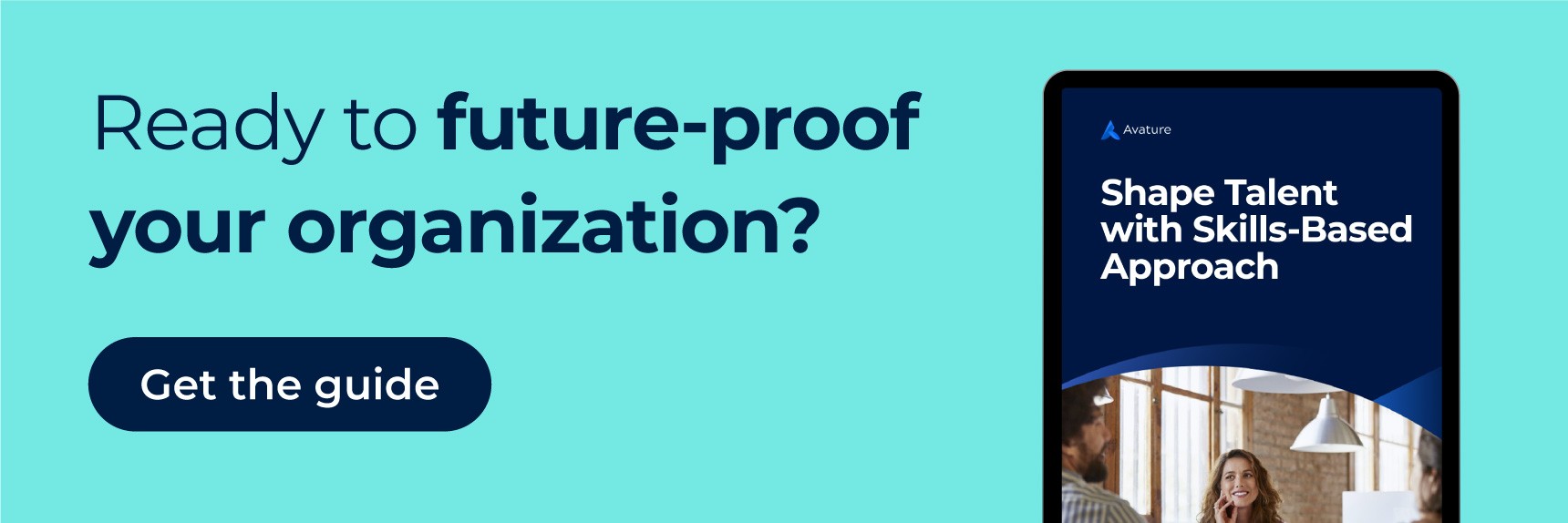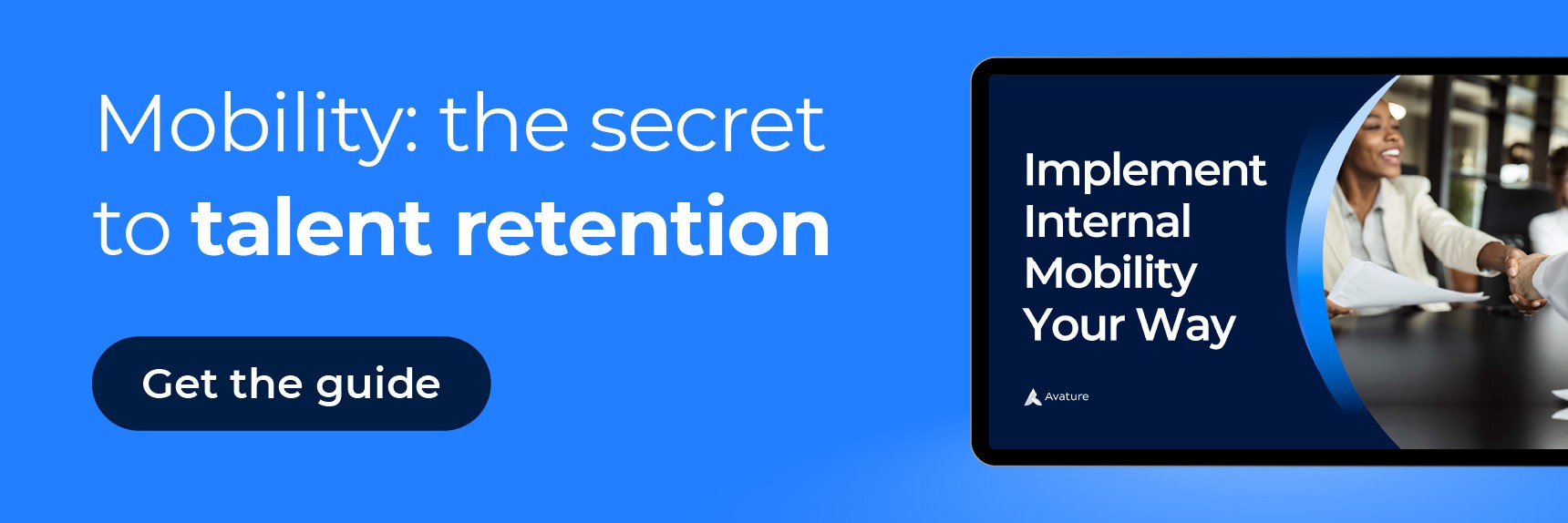Recent events have deeply impacted companies worldwide, providing an opportunity to design a new path forward in strategic HR.
From skills shortages to talent mobility, from working from home to hybrid work models, companies everywhere are facing challenges head-on. In doing so, they’re also developing new ways of attracting and retaining talent to navigate the coming era of work.
During a CHRO meeting in San Francisco, several company leaders and our CEO and founder, Dimitri Boylan, got together to discuss what organizations need to be aware of when it comes to building a total talent strategy in this day and age. We’ve gathered the most valuable insights, so be sure to read on!
The Importance of Workforce Skills
To a large extent, future-proofing an organization involves shifting towards a total talent strategy that contemplates workforce skills rather than traditional roles. In fact, research conducted by Deloitte found that eight out of ten workers, HR and business leaders agree that jobs are no longer the best way to organize work.
As Pranesh Anthapur, VP of HR at Uber, highlighted, it’s important to first understand how jobs are changing in the future of work and the nuances this brings.
We invested a lot to understand what the different jobs are, how we can configure them, and who we need to collaborate with in this new world.
– Pranesh Anthapur, VP HR at Uber
With data scientists and data science spread out in every sector at Uber, they decided to leverage the existing workforce skills and identify any talent gaps to be filled. By analyzing jobs, company and market changes, and what the business requires, they were able to better grasp what skills are needed from candidates in different roles and what the company also needed to work on in the new era of work.
Developing a talent management strategy isn’t the only thing that’s shifted this past year, as there’s also been a change in talent acquisition strategies when it comes to identifying relevant candidates. According to Paul Phillips, Global Head of Talent Acquisition and Total Reward at Avanade, they focused more on the learning agility candidates possess instead of the current skills they may have.
We have seen a shift in our mentality around what a good hire looks like here at Avanade and started to focus less on the skills they have today, on the basis that we’re looking for individuals that have really high learning agility, are courageous and are ambitious. We look for some of those softer skill sets that we can then utilize to enable that continuous learning approach that I think is necessary, certainly in the world of technology we’re working in today.
– Paul Phillips, Global Head of Talent Acquisition & Total Reward at Avanade
Learning and Development
A 2023 report from the World Economic Forum found that 44 percent of workers’ skills will be disrupted in the next five years. In this context, companies like Uber and Avanade are proactively analyzing the skills their workforce needs to incorporate for a total talent strategy and increasingly putting learning and development initiatives in place.
Both Paul and Pranesh agreed that implementing training and learning programs for their internal talent is essential for company performance and employee engagement since 76 percent of employees say they are more likely to stay with an organization that offers continuous training.
When it comes to Avanade, Paul described that they’ve focused on transitioning their business from a professional services organization to educators. They’ve done this by setting up three entry points into Avanade, investing in the talent up front and reskilling them so they are job-ready and project-ready. These entry points are:
- Early talent.
- Career changes, returners to work. This enables Avanade to look at untapped talent pools with people who want to create more job security.
- Individuals with technology skills that differ from the ones at Avanade. Although these individuals have a baseline, they require upskilling to be more in touch with the technology used at the company.
A great example I could share is something recent in Brazil. We’ve just hired 200 women. This not only helps us to meet our skills shortage but also some of our diversity goals as an organization. These individuals weren’t all early talent. We had 50+ year olds joining Avanade to start a new career in the world of technology. We diversified this talent in different skill sets depending on the needs of our business that we saw coming around the corner and invested in upskilling that talent so they could be job ready.
– Paul Phillips, Global Head of Talent Acquisition & Total Reward at Avanade
In Uber’s case, Pranesh explained they’ve created a platform that allows them to promote internal gigs and let employees get involved in projects. This lets people learn new skills from working on projects aligned with company needs while still doing their jobs.
You will learn more by doing something new. That really aligns with our own promotion and career path philosophy. So we are seeing a huge uptick of gigs and some of them result in a full time transition to the role that they never thought they would. That’s an example of how one new behavior we’ve learned has been implemented and is seeing huge success.
– Pranesh Anthapur, VP HR at Uber
Pranesh also noted that they had vacancies in a few business areas, such as recruiting. So, looking at the number of recruiter job openings they had, they decided to establish a recruiter academy to hire and train new graduates. They promoted the jobs on campuses and put a special focus on how recruiting could be developed as a gateway into other roles.
Don’t Take Internal Mobility For Granted
For most companies in recent years, internal mobility has been a mandatory necessity to fill vacancies as quickly as possible. With skills in mind, companies have seen that career growth in the future of work is no longer necessarily a ladder but rather more of a lattice.
Currently, employees look forward to growing wherever existing workforce skills and learning take them, vertically or horizontally.
These internal opportunities and gigs make up a valuable part of the total talent strategy of the future, which wouldn’t be complete without considering employees’ career paths, growth and aspirations.
In Uber’s case, Pranesh described that while a part of their business immediately died once the pandemic struck, another grew exponentially. They quickly realized that they had to incorporate an internal mobility process that allowed them to allocate talent with rapid learning potential to the areas of need.
Internal mobility has worked well for us. (…) We do a lot of that, more than many other organizations. We actively encourage it. Thirty percent of our new needs get filled through the internal mobility process so it’s a great career goal for employees.
– Pranesh Anthapur, VP HR at Uber
Pranesh also realized that the success of the organization’s internal mobility strategy relies on succession planning and performance management, too. This way, key roles were offered to internal candidates who were ready to take the next step in their careers and had the performance reviews and information to back up this decision.
Why Implement a Total Talent Strategy
As Dimitri described it, the events and disruptions of the past few years have forced companies to spur into action, presenting them with an opportunity for new ideas and strategies.
I think it’s been an opportunity. It’s a terrible crisis but there’s an opportunity for customers to have a whiteboard now, without getting caught in any constructs and move to a different kind of model.
– Dimitri Boylan, CEO & Founder at Avature
Internal mobility, learning and understanding the gaps in the organization are all part of what companies need to develop a talent strategy that prepares them for the future. Although the future of work is becoming fundamentally undefined, a workforce and a company that implements a total talent strategy will most likely be better prepared to navigate it than those that don’t take action at all.
It’s really about actively doing things now, even if you don’t know all of the future state. You’re in a state of action.
– Dimitri Boylan, CEO & Founder at Avature




